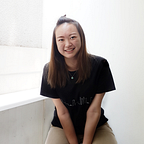Thin Shell Concrete Structure: Experiment 02
Computer model versus physical model.
Kingsley’s research is a shell structure form finding script. In order to create a shell structure, Kingsley applied a reverse gravity on the surface using Kangaroo. This was achieved through the 180° rotation in either the X or Y axis after the gravitational force was applied.
While researching methods to fabricate thin concrete shell structures, Kinglsey pointed out an image that resembles how he generated his shell structure.
NOWlab is developing a canvas interlaced with cement that when wet, the cement will be activated. When the wet fabric is hung in the correct points, will result in concrete shell structure on the underside of the fabric. This method is similar to Kingsley’s shell generation and we thought it would be a great idea to replicate this experiment. The aim of this experiment is to learn whether this method is the most efficient way of creating thin concrete shell structures.
Materials
- Needle punch non-woven fabric
- Timber for frame
- Strings
- Paperclips as hooks
- Cement
Method
- Build the timber frame
- Wrapped strings around the frame
- Cutted the fabric to 20cm x 40cm
- Used paperclips to make hooks and put it through the fabric in the anchor points from the grasshopper model
- Soaked the fabric in cement
- Hook the soaked fabric on to the timber frame
- Applied cement powder on to the fabric to add thickness and cure the cement faster
- Let dry
- Removed it from the frame and also removed the paperclips
Results from the experiment.
- Method (soaking): The cement did not grip to the fabric as much as we thought it would. This resulted in bare patches on the underside of the model.
- Material (needle punch non-woven fabric): The fabric has folding lines and when hung, the folded area tends to slink down. This caused kinks in the curvature of the shell. The fabric is quite thin, resulting in visible natural crease of hung fabric.
- Method & material (timber frame and string): The timber frame is not sturdy enough when the string is given tension. Although this did not affect the final result significantly, in a larger scale, this would have a larger displacement.
- Final structure: The overall structure can hold its shell and weights will be added to see how much it could hold. Due to the underside having bare patches, this could potentially weaken the overall structure. When removing the paperclips from the shell, cement came off with it and made the edges weak and flexible (as fabric would). From the top, the shape of the structure does not resemble a rectangle, not like the computer generated shape.
Things to do differently (method & materials):
- Method (soaking): Make the cement mix thicker and make sure both sides of the fabric is soaked with cement.
- Material (needle punch non-woven fabric): Iron the material so there are no creases left from the package or get a larger sheet.
- Method & material (timber frame and string): Make a sturdier frame and find an alternative to strings; try using metal as the lines. And not make the lines dependent on each other.
- Method (cut the fabric): Cut the fabric to match the computer simulation’s shape. Use “squish” command on Rhino and print the shell structure and anchor points. Mark and cut the squished surface on the fabric. Mark the exact locations of the anchor points.
- Method (removing the structure): Carefully remove the paperclips so that the cement does not come of the fabric.
Things to explore:
- Materials and method (cement): Will adding sand or small aggregate improve the overall strength of the structure.
- Method (powder cement): will sifting the cement powder to remove clumps would have an affect the strength of the structure.
- Material (fabric): Try using sponge cloth, as it is thicker (which would reduce creases) and would absorb more cement mix.
